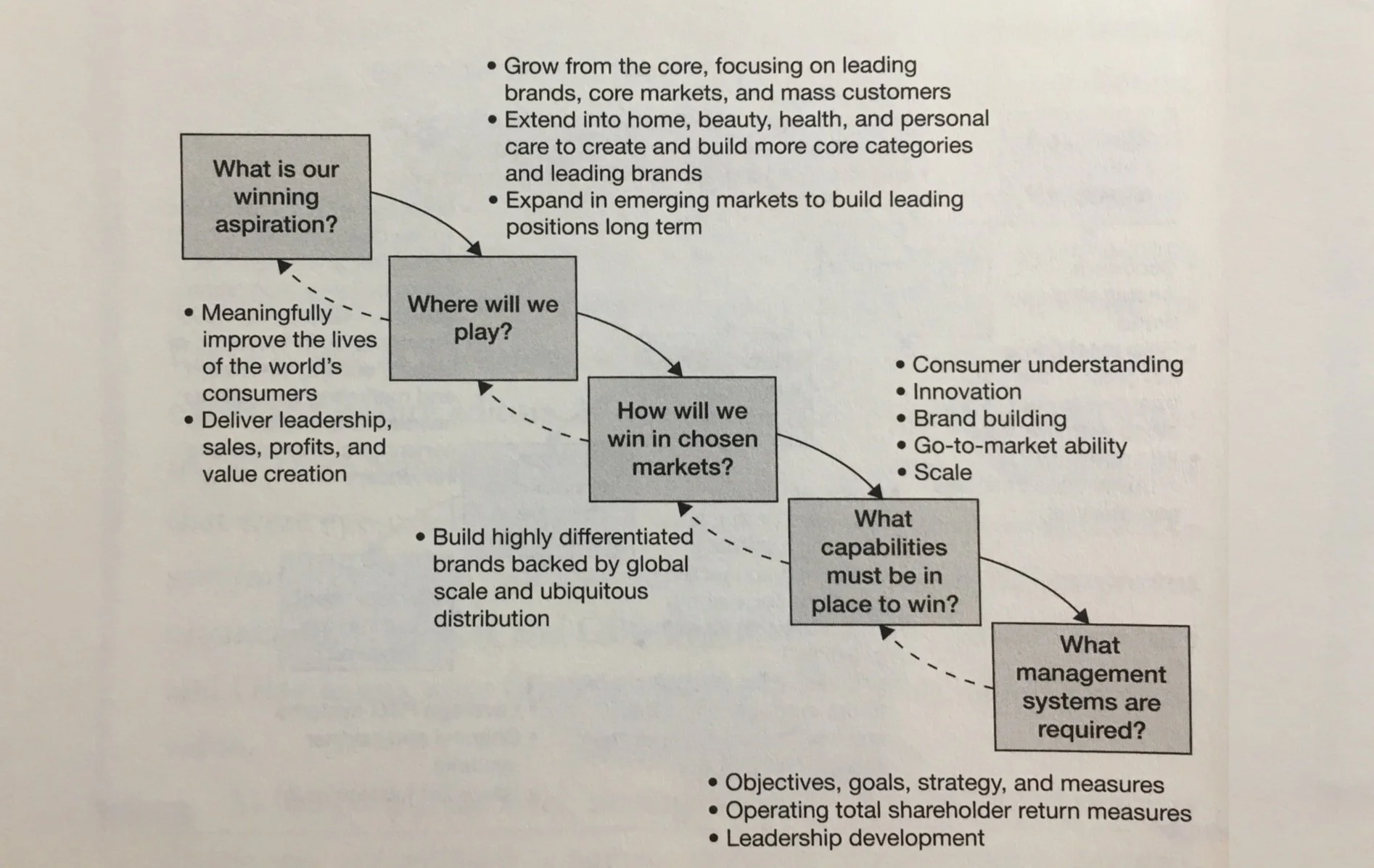WINNING STRATEGY
Designing a 'Playing to Win' Strategy for Viable, Feasible, and Desirable Solutions
Over the past 10 years, I have grown as a design strategist, guided by a structure known as the 'Winning Strategy.' Developed by Roger Martin during his time as CEO of P&G, this strategy revolves around five integrated questions. By combining this approach with design thinking, I’ve crafted solutions that are viable, feasible, and desirable. In this portfolio, I’ve organized my projects around these five key questions, showcasing the strategic planning behind each one.
01. WHAT IS OUR WINNING ASPIRATION?
Defining Your Goal and Outcomes
At the beginning of any project, it's crucial to have a clear vision and set of goals. Everyone on the team needs to understand what we're aiming to achieve so we stay aligned as the project moves forward. As a designer, my job is to distill the goal into one clear sentence and then work with the team to define the outcomes in a way that makes sense to all of us. It’s not always easy, but it’s such an important step. Using the "Winning Strategy" framework helps us ensure that every decision we make and every step we take is directly connected to the overall goal, keeping us focused and on track.
02. WHERE WILL WE PLAY?
Choosing Your Strategic Playing Field
At this research stage, specific markets, customer segments, and geographic regions are selected, and their needs are understood in context. There are two types of market solutions: value-driven and product-driven. A value-driven solution creates an uncontested market by addressing the specific needs of certain customer segments, rather than competing in an existing market with different product features. For example, the Yellow Tail wine brand simplified wine selection and taste, creating an easy and enjoyable experience for entry-level wine drinkers. By focusing on consumers' specific needs, unique market spaces can be carved out even in traditional markets.
03. HOW WILL WE WIN IN CHOSEN MARKETS?
Designing a Winning Value Proposition
Once the needs of your target customers are identified, the next step is to design a product and create a plan for its market implementation. At this stage, I rely heavily on the product user journey map, one of my specialties as a designer. By using insights from target customers, you can create personas and storyboards that illustrate how your solution addresses their needs.
The storyboard serves as a blueprint, simulating how the solution fits into users' lives, and includes strategies for marketing and customer management. However, these assumptions must be validated before moving forward.
04. WHAT CAPABILITIES MUST BE IN PLACE TO WIN?
Building Necessary Organizational Capabilities for "How to Win"
At this stage, the focus is on identifying the key activities and capabilities needed to support the strategic plan and ensure success in the market. This step helps assess the feasibility and viability of the plan. For example, in my project to create a photography service for B2B fashion e-commerce, four essential capabilities were identified: software development for online ordering, photo studio operation, partnerships with model agencies and shipping carriers, and customer management. These capabilities were aligned with the core strengths of the B2B fashion e-commerce platform, helping to build an ecosystem around the main business.
05. WHAT MANAGEMENT SYSTEMS ARE REQUIRED?
Establishing a Strategic Review Measurement System
for Product Development
To make sure a product launch goes smoothly, I always put together a detailed set of metrics and share them with all stakeholders. It's important to define the goals and expectations for each phase of development because you can’t measure everything by profit alone. Without clear communication, a project can stumble if upper management doesn't fully grasp the purpose of each stage.
I experienced this firsthand on one project where some team members were expecting profits within five months, even though we were still in the promotion and marketing phase. That taught me the importance of having everyone on the same page, using the same measurement system, and reviewing progress consistently. It’s the only way to ensure we’re all moving forward together.
